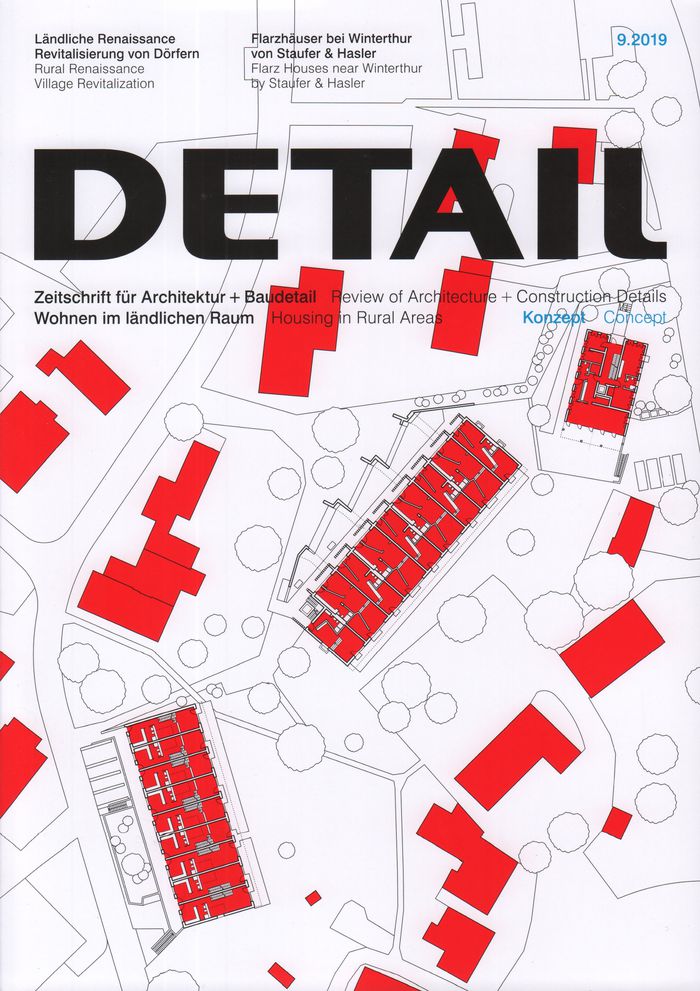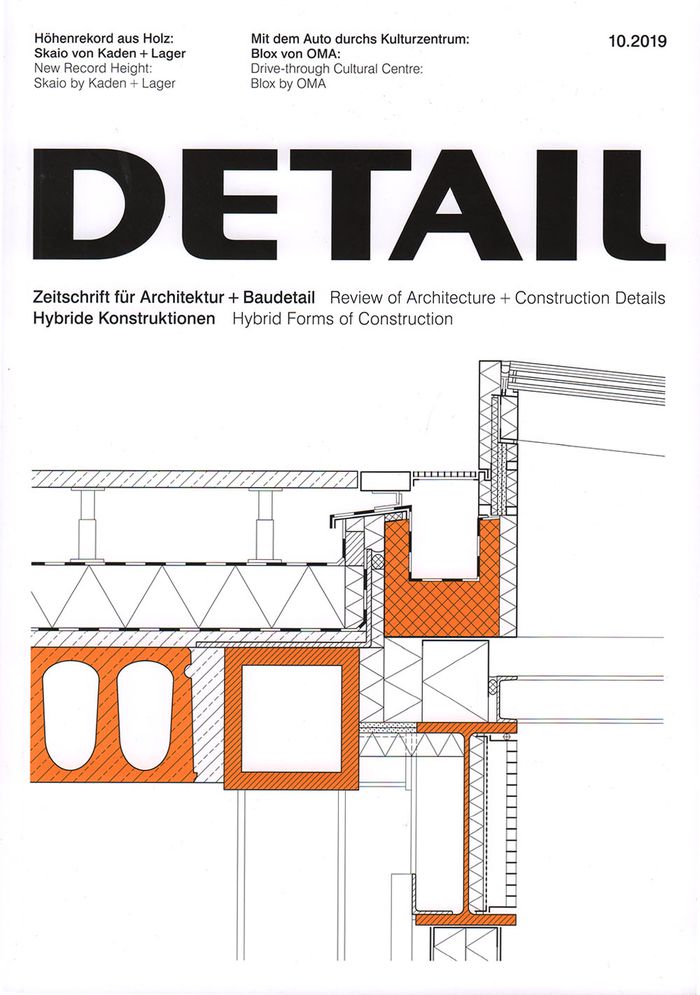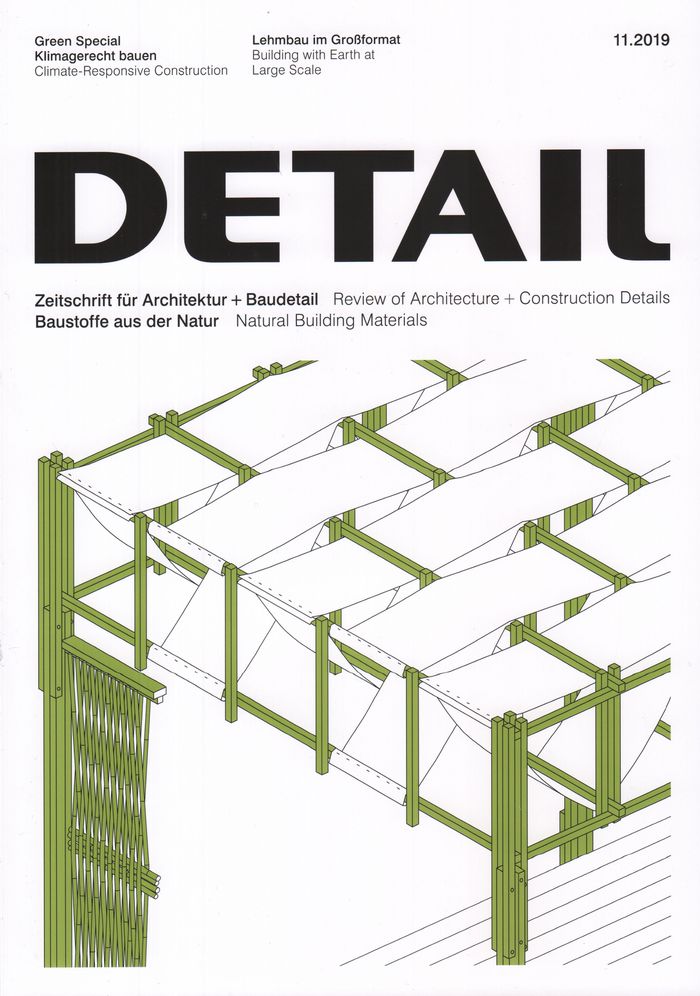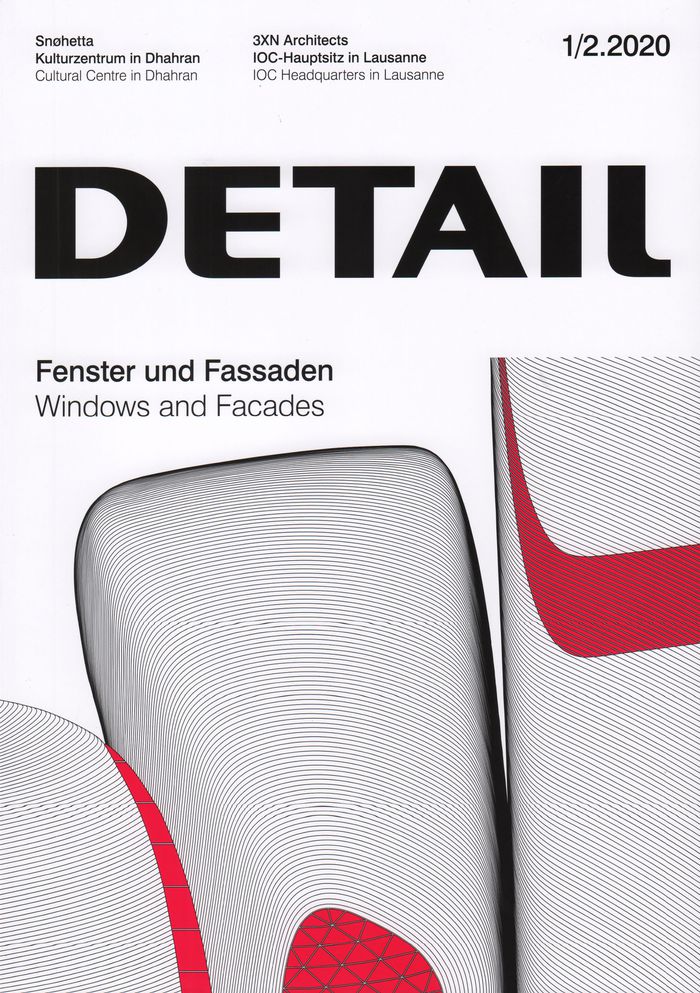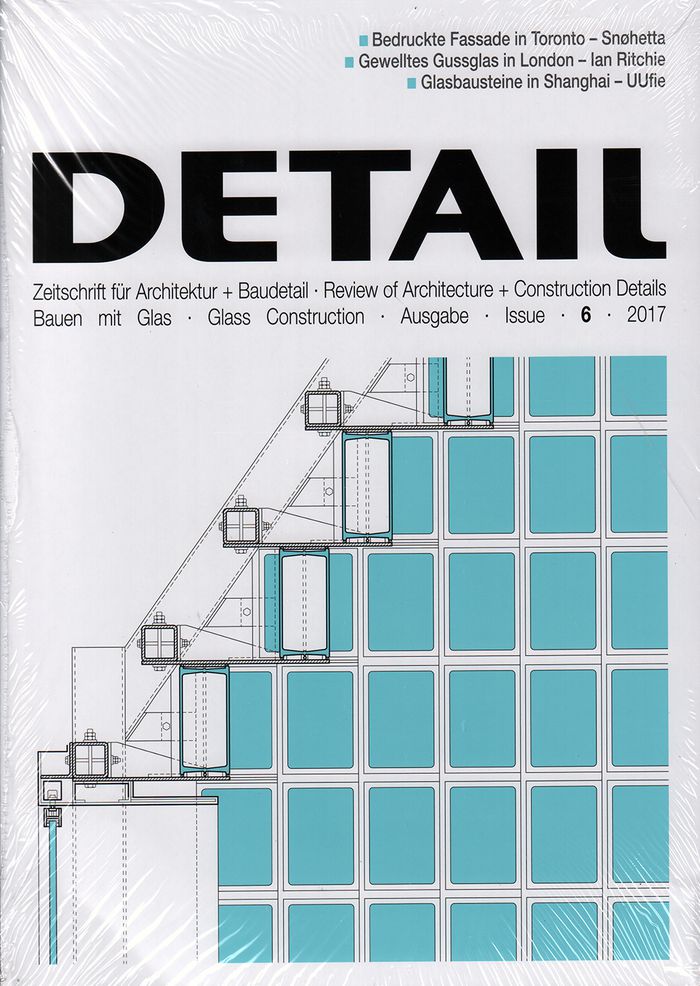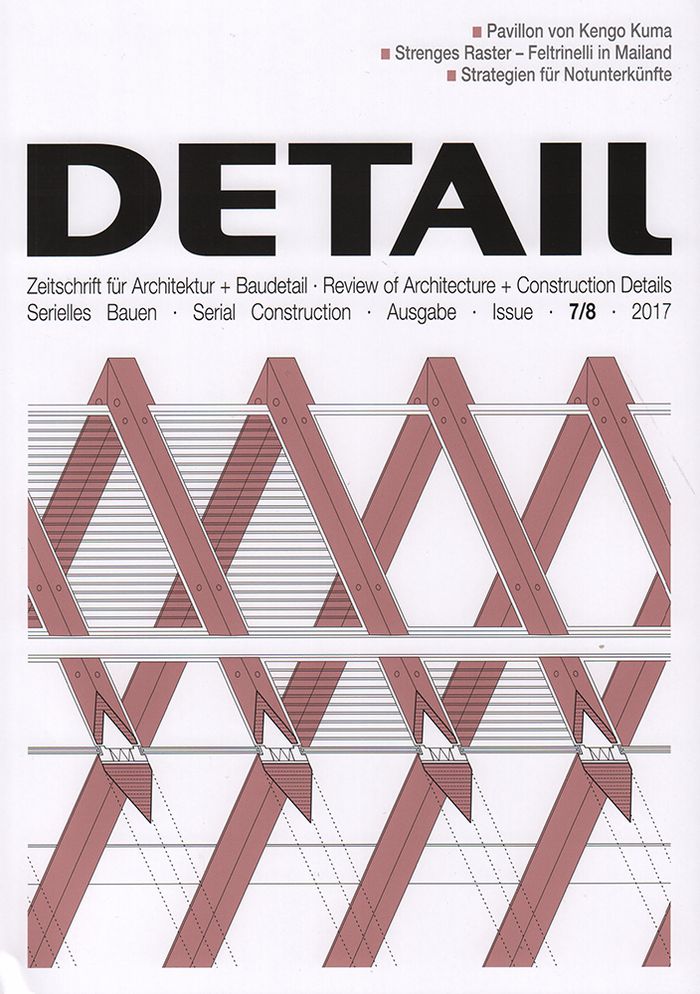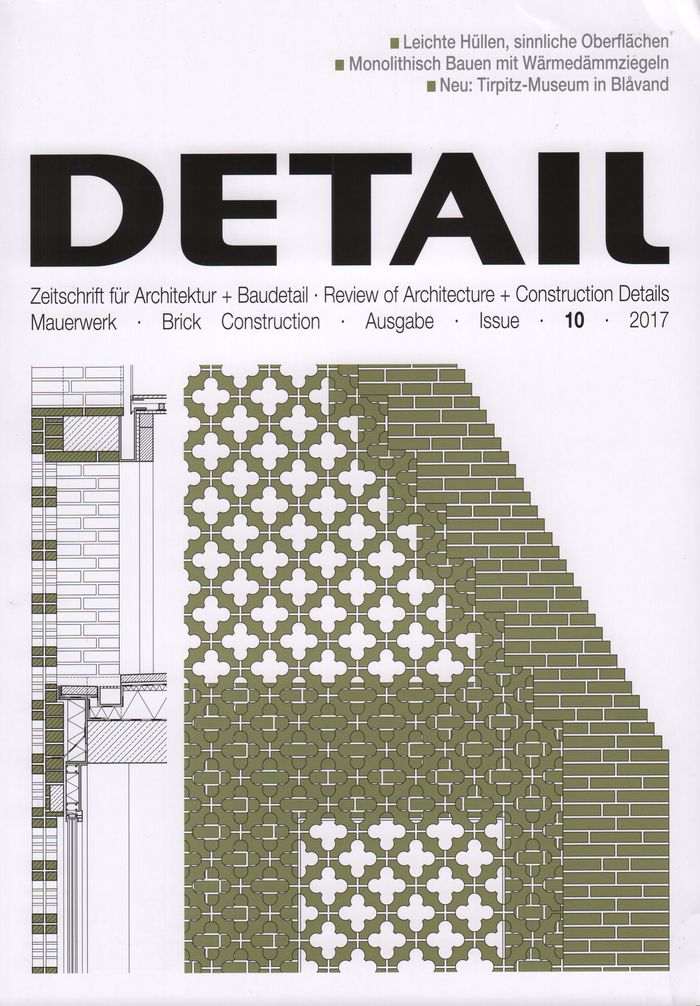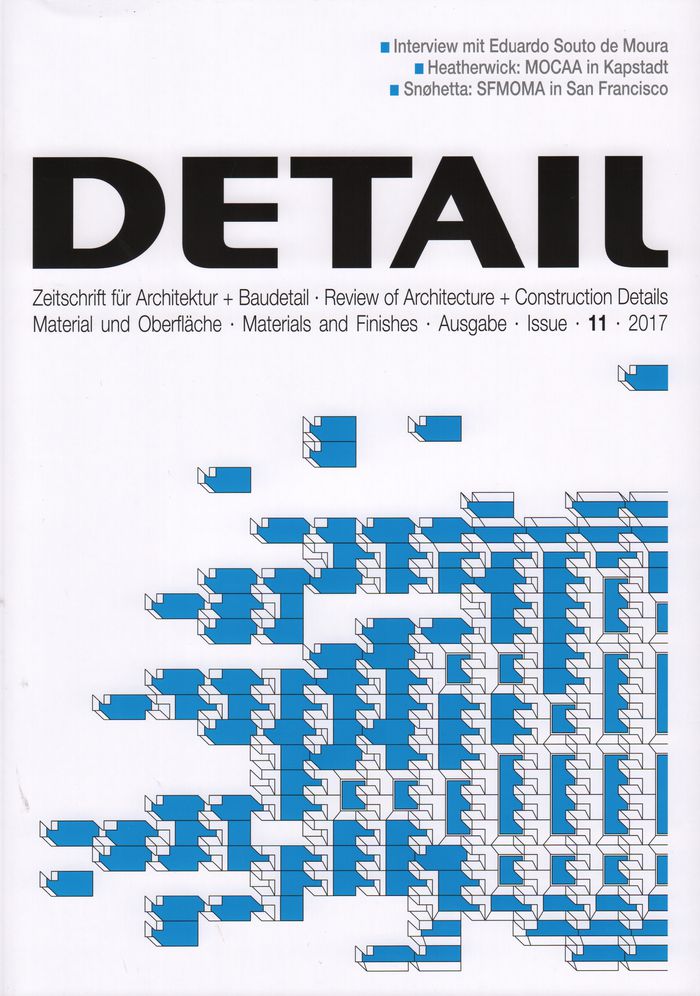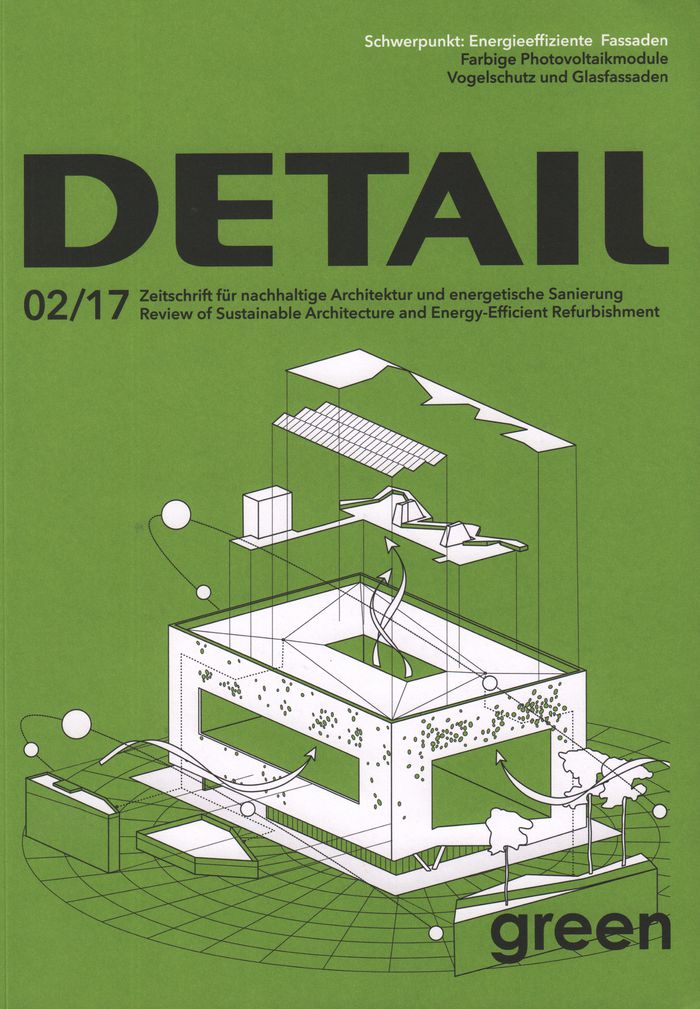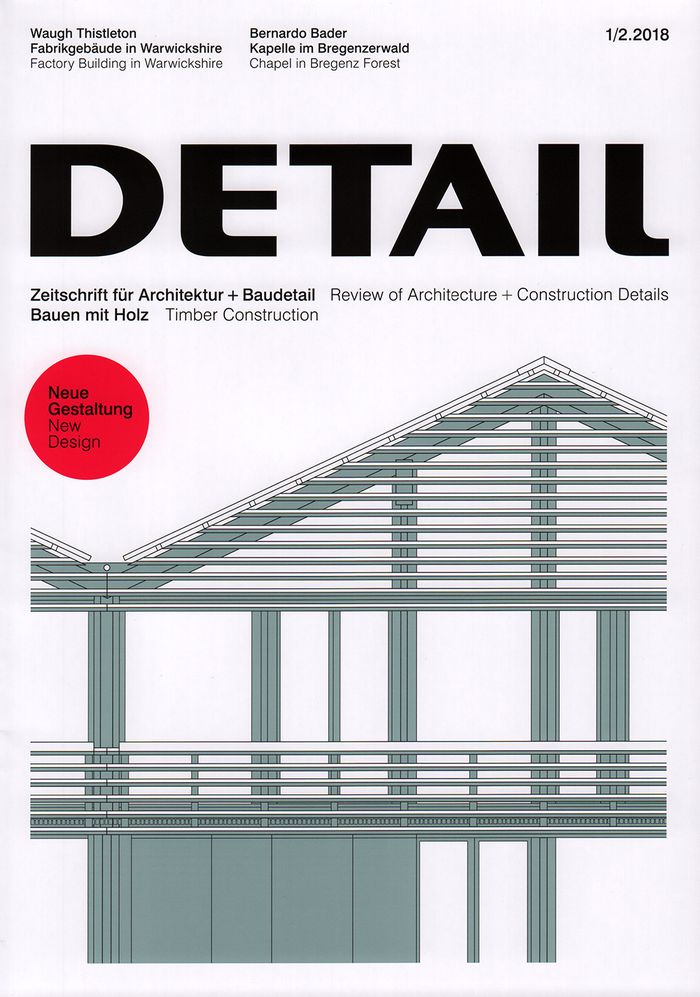Detail 9 2019
$32.95
(available in store)
Summary:
Review of architecture + Construction details
Detail 9 2019
Actions:
Price:
$32.95
(available in store)
Summary:
Review of architecture + Construction details
Magazines
Detail 10 2019
$33.95
(available to order)
Summary:
The latest issue is now available at the bookstore!
Detail 10 2019
Actions:
Price:
$33.95
(available to order)
Summary:
The latest issue is now available at the bookstore!
Magazines
Detail 11 2019
$33.95
(available in store)
Summary:
The latest issue is now available at the bookstore!
Detail 11 2019
Actions:
Price:
$33.95
(available in store)
Summary:
The latest issue is now available at the bookstore!
Magazines
Detail 1/2 2020
$33.95
(available in store)
Summary:
Windows and facades
Magazines
$32.95
(available to order)
Summary:
“Transparency is overrated,” Jacques Herzog asserted roughly a year ago at the opening of the Vitra Schaudepot in Weil am Rhein. Is that really the case? In the present issue, we explore this topic and take stock of the present situation. Admittedly, the emblematic character of transparent architecture has lost much of its relevance since the post-war years – its charisma(...)
Detail 6 2017: glass construction
Actions:
Price:
$32.95
(available to order)
Summary:
“Transparency is overrated,” Jacques Herzog asserted roughly a year ago at the opening of the Vitra Schaudepot in Weil am Rhein. Is that really the case? In the present issue, we explore this topic and take stock of the present situation. Admittedly, the emblematic character of transparent architecture has lost much of its relevance since the post-war years – its charisma as a symbol of democracy. Yet buildings of glass are far more varied today, and their architecture is in many ways unique. In this issue of Detail, Heide Wessely has selected some groundbreaking schemes. With its printed-glass facade, the Ryerson University structure in Toronto by Snøhetta offers students variously lighted internal spaces, which they, in turn, can use for different study scenarios. With pivoting, printed-glass louvres, the facade of the bank in Nantes by AIA Associés responds to insolation to create a climatic buffer zone. The thermally insulated cast-glass elements in the outer skin of the Sainsbury Wellcome Centre in London by Ian Ritchie Architects screen the interior of the research institute from the street, while allowing diffused, non-glare light into the working spaces. In contrast, the glass pavilion in Manchester and the glazed atrium in Baker Street, London, are functional and restrained extensions to existing buildings. The Discussion section in this issue explores the potential of glass in the many housing towers that are springing up in cities today; and in his Technology article, Kars Haarhuis takes a look at innovative hybrid structures in which concrete or steel are combined with glass in a load-bearing form.
Magazines
Detail 7/8 2017
$32.95
(available to order)
Summary:
The laws of the series. In the 1920s, a group of architects in Milan came together to form a movement that would later be known as Razionalismo. Architecture, they were convinced, must adhere to the rules of reason. They propagated the notion of “pure rhythm”, which was reflected in the repetition of individual elements as a fundamental design principle. Today, the(...)
Detail 7/8 2017
Actions:
Price:
$32.95
(available to order)
Summary:
The laws of the series. In the 1920s, a group of architects in Milan came together to form a movement that would later be known as Razionalismo. Architecture, they were convinced, must adhere to the rules of reason. They propagated the notion of “pure rhythm”, which was reflected in the repetition of individual elements as a fundamental design principle. Today, the relevance of serial production methods in architecture reach far beyond their significance at the time of Razionalismo. Repetitive structures can not only be found characterising the aesthetic appearance of buildings, they often play a decisive role in complex planning and construction processes, such as in the combination of individual modules or other industrially prefabricated elements. In our July/August issue, we present contemporary buildings that embrace the notion of the series in a variety of ways. For our Documentation section, Burkhard Franke explores examples in which aspects of repetition is used both as a design element and with respect to construction methodologies. A new social housing project by Florian Nagler in Munich, for instance, is a hybrid construction made with prefabricated wood elements. Meanwhile, a student housing complex in Berlin that Holzer Kobler Architekturen built using shipping containers resist any sense of monotony despite their stacked arrangement. For the exemplary French social housing buildings by Poggi & More near Bordeaux and by PPA architectures in Toulouse, modular components likewise contributed to the reduction of construction costs. Are buildings produced according to serial fabrication methods invariably cost effective? In our Technology feature, Frank Kaltenbach has compiled an overview of recent solutions in refugee housing. The majority of them needed to be built within a short time period and under high budgetary constraints. The ways in which serial production methods seem to be predestined for such demanding projects can be discovered in this issue.
Magazines
$32.95
(available to order)
Summary:
Detail 10 2017: Brick construction
Detail 10 2017: brick construction
Actions:
Price:
$32.95
(available to order)
Summary:
Detail 10 2017: Brick construction
Magazines
$32.95
(available to order)
Summary:
There is hardly another topic that fascinates architects more than new materials, with their previously unimagined properties and enchanting haptic surfaces. Yet if you look at built reality, these hardly play a role. On the contrary, the international trend continues to move towards natural surfaces made of wood, brick and natural stone. As aesthetically and ecologically(...)
Detail 11 2017: materials and finishes
Actions:
Price:
$32.95
(available to order)
Summary:
There is hardly another topic that fascinates architects more than new materials, with their previously unimagined properties and enchanting haptic surfaces. Yet if you look at built reality, these hardly play a role. On the contrary, the international trend continues to move towards natural surfaces made of wood, brick and natural stone. As aesthetically and ecologically meaningful as they may be, this development becomes alarming when buildings and interiors in southern China, Paris or Copenhagen become indistinguishable. The examples in this issue show, however, that individual solutions are still possible even within a narrow range of materials and colours. Just a few years ago, natural stone and solid wood – building materials used today by the luxury sector – were cheaper than concrete and veneer in countries like Portugal, as the Pritzker Prize winner Eduardo Souto de Moura explains to us in an interview. In his eyes, the design elements of architecture remain the same throughout history, only the materials change.
Magazines
Detail green 02/17
$30.95
(available to order)
Summary:
‘Build, build, build – as quickly and cost-effectively as possible’: this mantra can currently be heard over and over and again in the political arena. Questions as to what sustainable building actually means and what level of comfort buildings should achieve need to be raised. Rainer Vallentin addresses these topics in his article in this issue, while Hans Schmid and(...)
Detail green 02/17
Actions:
Price:
$30.95
(available to order)
Summary:
‘Build, build, build – as quickly and cost-effectively as possible’: this mantra can currently be heard over and over and again in the political arena. Questions as to what sustainable building actually means and what level of comfort buildings should achieve need to be raised. Rainer Vallentin addresses these topics in his article in this issue, while Hans Schmid and Wilfried Doppler focus on the effects of contemporary building on birdlife. In addition, DETAIL green reports on a facade renovation rich in pan-European symbolism, Europe’s largest ‘vertical garden’ and promising new developments in the colouring and surface design of solar modules. After all, design aspirations should be retained even though energy standards in the building industry are becoming increasingly ambitious.
Magazines
$32.95
(available to order)
Summary:
Wood has a long history as a building material, and for a while it seemed as if its final chapter ended during the 1950s. But things turned out differently. Today a true renaissance in timber construction is underway, and in many places it is finding expression in urban contexts. Wood buildings are appearing in ever-greater numbers, heights and typologies, from industrial(...)
Detail 1/2 2018: timber construction
Actions:
Price:
$32.95
(available to order)
Summary:
Wood has a long history as a building material, and for a while it seemed as if its final chapter ended during the 1950s. But things turned out differently. Today a true renaissance in timber construction is underway, and in many places it is finding expression in urban contexts. Wood buildings are appearing in ever-greater numbers, heights and typologies, from industrial buildings and museums to sports halls. Timber construction has long since liberated itself from the cliché of single-family countryside cottages. Thanks to new technologies and methods, wood has become a popular building material – conserving resources and offering a promising future.
Magazines
